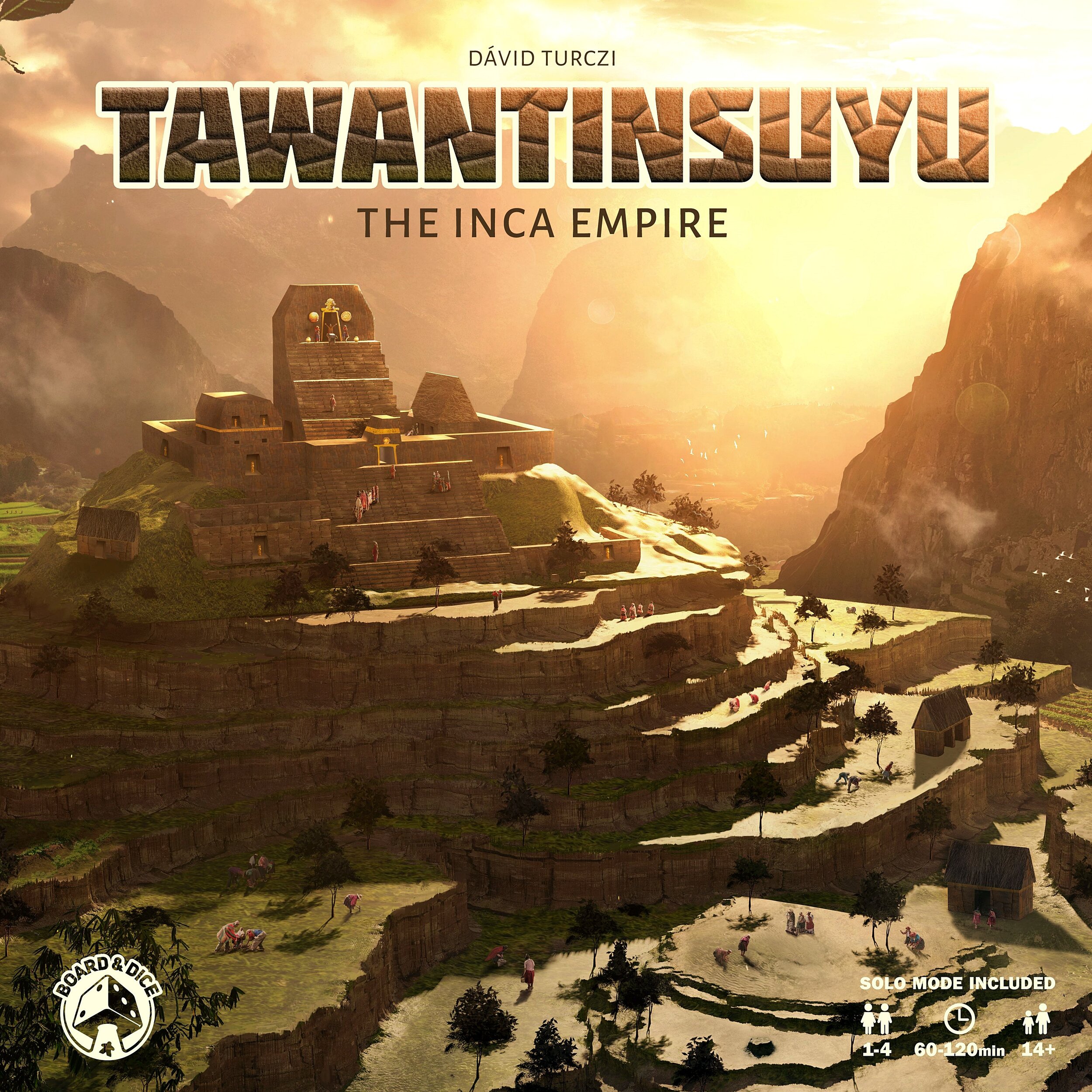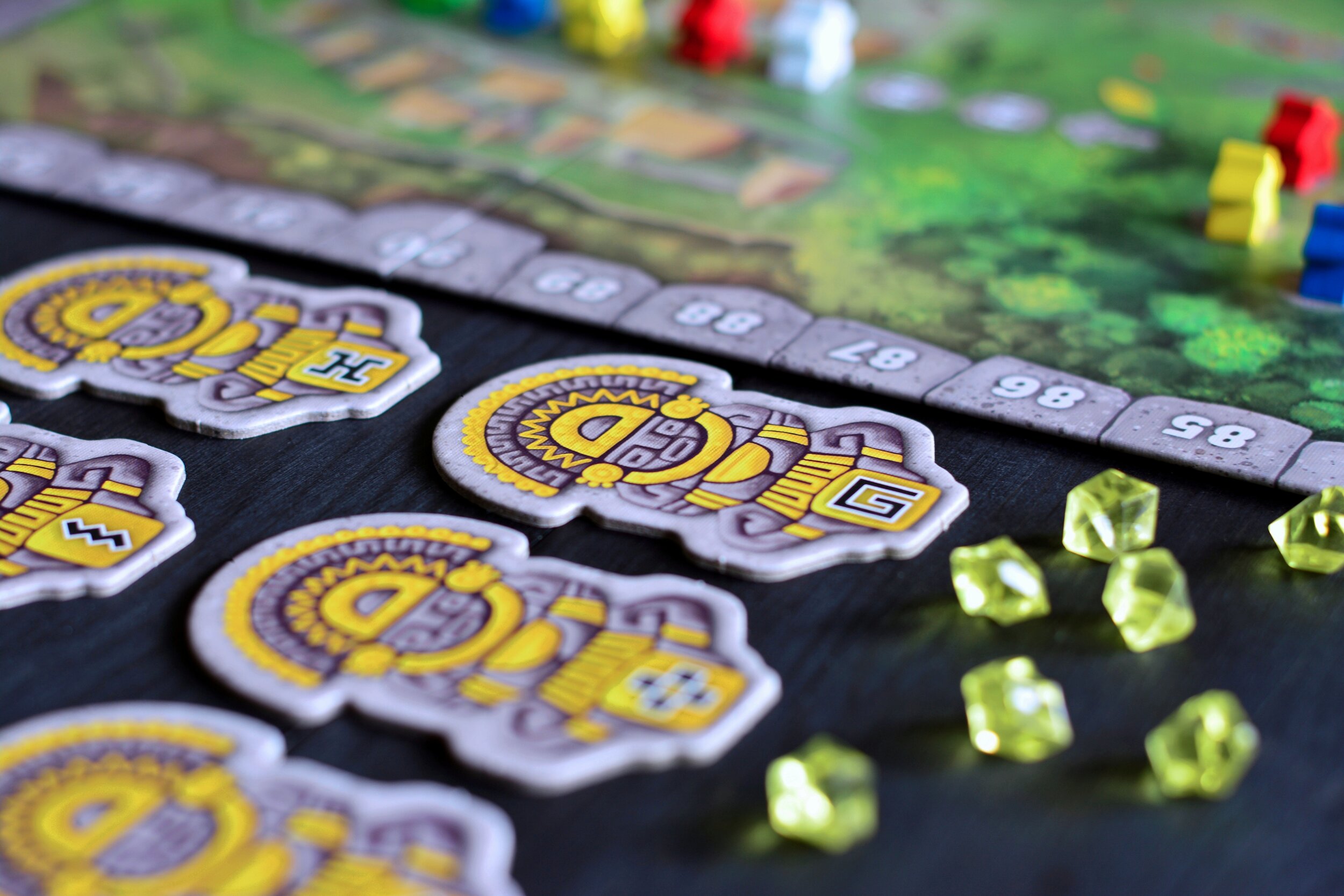Tawantinsuyu: The Inca Empire - A Solo Review
Image: Board & Dice
INTRODUCTION
“The great Sapa Inca Pachacuti turned to his offspring and ordered them to worship Inti, the Sun God, and to expand the Inca Empire as far as the llamas roam. With Chinchaysuyu, Antisuyu, Qullasuyu, and Kuntisuyu — the four regions of the new empire — now ripe for conquest, the time has come for Pachacuti's true successor to arise.
Gather your people from the villages below and use their unique abilities to strategically place them where they can perform the greatest tasks for you. Climb the steps of the Sun Temple, reaping the rewards of your piety. Build structures that both nourish your people and provide you with benefits no other has at their disposal. Muster an army and conquer villages in the four realms of Tawantinsuyu. Prove yourself a worthy successor to Pachacuti and lead the Inca to glory!”
Having designed the solo modes in Teotihuacan: City of Gods and Trismegistus: The Ultimate Formula, two of publisher Board & Dice’s previous entries to their catalogue of heavy Euro board games beginning with the letter t, designer Dávid Turczi enters the stage as sole author of Tawantinsuyu: The Inca Empire (henceforth Tawantinsuyu). Although I occasionally find managing the solo bot to be a bit cumbersome in terms of rules overhead, I still thoroughly enjoy Teotihuacan: City of Gods as a solitaire game experience. As a result, I was really excited to take a closer look at the latest entry to this beloved series of board games to see what Mr. Turczi would bring to the table for one.
Full disclosure: a review copy of Tawantinsuyu: The Inca Empire was kindly provided by publisher Board & Dice.
COMPONENTS
As you might suspect given its pedigree, Tawantinsuyu is a fairly complicated beast to parse in terms of interlocking game mechanisms where minute details are of the utmost importance. Unfortunately, in its current form I found the rulebook to be more than just a little bit incomprehensible particularly regarding how the solo opponent Axomamma performs certain actions. It is not so much a question of glaring omissions, rather there are certain aspects of the solo mode which are not presented as clearly as needed. Fortunately, and to give credit where credit is due, publisher Board & Dice in collaboration with author Dávid Turczi have uploaded revised versions of not just the rulebook but also the player aids and Axomamma’s board all of which are readily accessible through the game’s official page on Board Game Geek. And even though I applaud the commitment and effort to provide a more comprehensible set of rules and player aids, I cannot help but feel that this is an increasing problem in the board game industry of having to revise and update rules documents but that is a discussion for another day.
Photo: Fredrik Schulz
As for the quality of the actual components I found them to be “fine” for want of a better word. At the risk of sounding incredibly pretentious there is something about the overall graphical design of Tawantinsuyu that I find lacking, like the game is missing that oh so intangible but nonetheless important flair of je ne sais quoi. It is also the case that the game is something of a table hog with its massive main board and additional market rows of cards, building tiles, and statue tokens of various sizes. On the plus side I really appreciate the custom shaped wooden resource tokens and any board game that features acrylic gems gets a golden star in my book. Overall, from an aesthetic perspective Tawantinsuyu is perfectly serviceable albeit not particularly exciting at least in my eyes.
GAME PLAY
Describing Tawantinsuyu simply as a worker placement game would be accurate in the same way as referring to the Mariana Trench as “really deep”, true but utterly inadequate. And yet at its core this is indeed a game where players are deploying workers meeples onto locations scattered around on the main board in order to perform various actions, in the same way as one would expect from this tried-and-true formula of board game design. However, whilst reading the rulebook it quickly became evident that Tawantinsuyu has far grander ambitions than being a game of mere resource collection. Unlike other worker placement games where players can retrieve their labourers, in Tawantinsuyu once placed the worker remains situated on the main board to the end of the game. This is because workers can create synergetic bonds with one another if they share the same colour, allowing for more powerful player turns as you are able to perform several actions in one fell swoop. Further adding to the complexity is the fact that each worker colour has a special ability that triggers once placed on the main board. The red warrior for example can retrieve a previously placed adjacent worker, whilst the yellow courier provides a resource discount when added onto the main board.
Photo: Fredrik Schulz
In many ways this notion of synergistic worker placement reminds me of Ragusa, the difference being that Tawantinsuyu is far more intricate in its execution. In order assign a worker meeple to the main board you first need to play a God card from your hand. Each card shows a symbol that corresponds to locations scattered through the balconies and sections of the Sun Temple indicating potential avenues for worker placement. Alternatively, if none of your God cards have a symbol that matches a location you been eying you can instead opt to pay a single precious gold resource which allows you to place a worker on any location regardless of icon prerequisite. As you might suspect this is a less efficient approach, as gold is a scares resource to come by. In theory this mechanism sounds simple enough: play a card, place a worker, collect reward. But because there are so many variables to consider Tawantinsuyu can easily devolve into a crippling state of analysis paralysis, as you try to compute how to match the right worker colour with the corresponding God card symbol in relation to previously allocated workers… And this is before considering that there are several other areas of interest fighting for your attention. There are the tapestries which not only provide end-of-game victory points but also resources if paired with matching icons. Then there is a sprinkle of area control where players are either playing or outright discarding army cards to reap the rewards for having the most control markers on a region. And no Euro board game worthy of its salt would be complete without the mandatory temple track where players race to the top in quest of glory, prestige and you guessed it victory points. Combine all of these various mechanisms and it is easy to see why Tawantinsuyu can cause a bit of an intellectual cramp. Although I suppose that is the beauty of playing board games solo, you are free to ponder a move without the piercing gaze of judgement cast by fellow participants around the game table.
As for the experience of playing the game solo, Tawantinsuyu proves to be yet another shining example showcasing the talents of author Dávid Turczi as a board game designer. At this point given his rather extensive resumé I think it is fair to say that Turczi tends to design solo modes in board games that require a fair bit of effort on behalf of the solitaire player in terms of grokking the underlying systems. That being said, those who are willing to put in the time and effort of coming to grips with the structure of the automated player are more often than not rewarded with a dynamic dare I say “intelligent” solo opponent and Tawantinsuyu is no exception. Much like Anachrony, the artificial opponent in Tawantinsuyu known as Axomamma has a player board of its own where the available actions are dictated by numerical tokens which in turn correspond to a custom six-sided die. If Axomamma is unable to perform actions that concern moving your High Priest token at the top of the Sun Temple, it will instead revert to the secondary option of adding a worker to the board and perform the actions as stipulated on the Axomamma player board. Once all actions have been resolved from top to bottom the corresponding numerical tokens advance a certain number of steps clockwise, thus ensuring that the solo opponent cycles through its actions in a more dynamic fashion as opposed to simply drawing blindly from a deck of cards. Similar to Turczi’z previous solo designs, playing Tawantinsuyu against Axomamma feels like interacting with a human opponent albeit one who operates under slightly modified parameters.
Photo: Fredrik Schulz
FINAL THOUGHTS
Initially I was going to dismiss Tawantinsuyu as being too complicated for its own good, a board game design tarnished by rules exceptions and minute details easily overlooked or rather overshadowed by the interlocking mechanisms. Even after multiple plays, I found myself forgetting rules of importance in part due to inconsistencies present in the original printing of the rulebook but also simply because this is a complicated board game to grok at least in my feeble brain. And then something peculiar happened. Like a proverbial tick, the game started to occupy my headspace as frustration transformed into fascination. I wanted to “solve” this puzzle, to internalise what Tawantinsuyu was teasing all along. Which as it turns out is a game of intricate choices that rewards system mastery to those who are willing to invest the time and effort coming to grips with what initially seems like an endless sea of iconography and mechanisms that intertwine with one another. I know a lot of people have struggled with playing Tawantinsuyu solo and I can definitely see where they are coming from, as this is indeed a figurative beast of considerable size to overcome. But as Dávid Turczi himself described his solo design: “For those it clicks, the branching choices combined with the deliciousness of timing is a feast” and I for one am inclined to agree.



